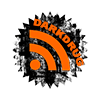Understanding the Silent Killer: Respiratory Syncytial Virus
“I encourage parents to talk to their doctors about how to protect their little ones against serious RSV illness, using either a vaccine given during pregnancy, or an RSV immunization given to your baby after birth”
Director for the Centers for Disease Control and Prevention (CDC) and the Administrator of the Agency for Toxic Substances and Disease Registry
Respiratory syncytial virus, commonly known as RSV, has often been called “the forgotten virus.” Despite being a leading cause of infant hospitalization worldwide and resulting in an estimated 33 million acute lower respiratory infections each year, RSV still receives significantly less attention than other pediatric viruses like influenza. This is largely because the vast majority of RSV infections are mild and self-limiting in older children and adults. However, for vulnerable infants—especially preemies and those with underlying medical conditions—an RSV infection can be life-threatening.
RSV is an enveloped, single-stranded RNA virus from the Paramyxoviridae family. It was first discovered in 1956 after researchers noticed that chimpanzee research subjects were developing respiratory illnesses when exposed to human nasal wash samples. Subsequent analysis revealed the infectious agent to be a new virus, which was given the name “respiratory syncytial virus” due to its tendency to cause infected cells to fuse together into large clusters or “syncytia.”
There are two antigenic subgroups of RSV—A and B. Infection with one subgroup provides little cross-protection against the other, so reinfections are common throughout life. RSV enters cells by binding onto membrane proteins like heparan sulfate and using its fusion protein (F protein) to fuse with and enter the cell. The virus then hijacks the cell’s machinery to replicate its genome and assemble new virus particles that are released to infect neighboring cells.
Epidemiology and Transmission
RSV circulation follows a distinct winter seasonal pattern in temperate regions. In the UK, for example, most transmission occurs between late October and March. Globally, RSV transmission dynamics differ based on factors like climate, socioeconomic conditions, and population density. Infection occurs through close contact with infectious respiratory droplets or contaminated surfaces. Infants are particularly susceptible as they have underdeveloped immune systems and spend substantial time in close contact with caregivers. By age two, nearly all children will have had a primary RSV infection.
However, this primary infection often only provides partial immunity, so reinfections are common throughout life. Elderly and immunocompromised individuals also face higher risks of severe RSV disease. While RSV mainly infects humans, recent studies have detected the virus in various animal species, raising concerns about zoonotic potential. Continuous genetic evolution and reassortment also allow RSV to evade acquired immunity over time. These characteristics help explain its persistently high disease burden.
Disease Burden
For most healthy children and adults, RSV causes mild upper respiratory tract infections resembling the common cold. However, in high-risk groups, RSV lower respiratory tract infections like pneumonia and bronchiolitis can be life-threatening. Preterm infants, young children with congenital heart or lung diseases, and those with compromised immunity face the highest risks of severe disease requiring hospitalization.
Globally, RSV is estimated to cause over 30 million episodes of acute lower respiratory infection annually in children under five, leading to over 200,000 deaths according to WHO. In the US alone, RSV results in nearly 60,000 pediatric hospitalizations each year and is the most common cause of bronchiolitis and pneumonia in infants. Individuals with underlying conditions incur disproportionately high burdens—over 90% of infant RSV deaths occur in developing nations due to issues like lack of access to critical medical care.
The economic costs are enormous too. A 2008 study calculated the global societal cost of pediatric RSV disease to be over $6.7 billion annually, with over 75% of costs shouldered by developing countries. For families of hospitalized infants, out-of-pocket costs and lost wages due to caregiving responsibilities can be financially devastating. On a national level, prolonged ICU admissions and frequent readmissions place substantial strains on healthcare budgets and resources.
Diagnosis and Treatment
Since RSV symptoms resemble many other common respiratory illnesses, definitive laboratory diagnosis is required. This is usually done via immunofluorescent antigen detection in a respiratory sample like nasal wash or swab. Reverse transcription polymerase chain reaction (RT-PCR) assays provide highly sensitive and specific molecular testing as well. Chest x-rays may show signs of pneumonia in severe cases.
Currently, there is no RSV vaccine available for active immunization of infants and young children. Instead, prevention relies on passive immunization with palivizumab (Synagis), a monoclonal antibody administered to high-risk infants during RSV season. While shown to reduce lower respiratory infections and hospitalizations, palivizumab’s high costs restrict its use primarily to preterm infants in developed countries.
For treatment of symptomatic RSV cases, supportive care remains the mainstay. This includes humidified oxygen, adequate hydration and nutrition, and respiratory suctioning. Severe cases may require mechanical ventilation. Bronchodilators are commonly used but their effectiveness is debated. Recent randomized trials found oral or inhaled ribavirin, a nucleoside analogue antiviral, can moderately reduce RSV shedding and hospital stay in high-risk infants. However, its use is limited by strict administration guidelines and limited availability due to high costs and risks of teratogenicity. Several RSV vaccine candidates are also in development and undergoing clinical trials.
Public Health Measures
Proper prevention and control of RSV requires coordinated multi-pronged strategies. Raising awareness about RSV symptoms and risks among healthcare providers and the general public can help detect severe cases early. Infection control practices are critical in healthcare and childcare facilities, along with isolating children with symptoms until non-infectious. Handwashing is strongly encouraged for all, especially caretakers of high-risk infants who may require limited public exposure during peak RSV seasons.
Breastfeeding also appears protective against severe RSV disease in infants—maternal antibodies and complex oligosaccharides in breastmilk are thought to conferred added immunity. Smoking cessation and avoiding smoke exposure are also important modifiable risk factors that significantly increase infant chances of developing RSV bronchiolitis or pneumonia.
With its tremendous global burden, RSV clearly warrants more emphasis and resources from public health and research communities. Broader awareness of the virus can push development of much-needed preventive measures and prompt innovative research avenues that could one day eliminate RSV as a threat, especially in vulnerable infants worldwide. With continued efforts, the “forgotten virus” may cease to be overlooked.
Reference(s)
- Green Book Chapter 27a v2_0
Click TAGS to see related articles :
MEDICINE | PUBLIC HEALTH | RSV | VACCINE
- Millions of new solar system objects to be found...on June, 2025 at 1:34 am
Astronomers have revealed new research showing that millions of new solar system objects are likely to be detected by a brand-new facility, which is expected to come online later this year.
- Tea, berries, dark chocolate and apples could...on June, 2025 at 3:50 pm
New research has found that those who consume a diverse range of foods rich in flavonoids, such as tea, berries, dark chocolate, and apples, could lower their risk of developing serious health conditions and have the potential to live longer.
- Being in nature can help people with chronic back...on June, 2025 at 3:50 pm
Researchers asked patients, some of whom had experienced lower back pain for up to 40 years, if being in nature helped them coped better with their lower back pain. They found that people able to spend time in their own gardens saw some health and wellbeing benefits. However, those able to immerse […]
- Scientists say next few years vital to securing...on June, 2025 at 3:50 pm
Collapse of the West Antarctic Ice Sheet could be triggered with very little ocean warming above present-day, leading to a devastating four meters of global sea level rise to play out over hundreds of years according to a new study. However, the authors emphasize that immediate actions to reduce […]
- First direct observation of the trapped waves...on June, 2025 at 3:50 pm
A new study has finally confirmed the theory that the cause of extraordinary global tremors in September -- October 2023 was indeed two mega tsunamis in Greenland that became trapped standing waves. Using a brand-new type of satellite altimetry, the researchers provide the first observations to […]
- DNA floating in the air tracks wildlife, viruses...on June, 2025 at 3:48 pm
Environmental DNA from the air, captured with simple air filters, can track everything from illegal drugs to the wildlife it was originally designed to study.




